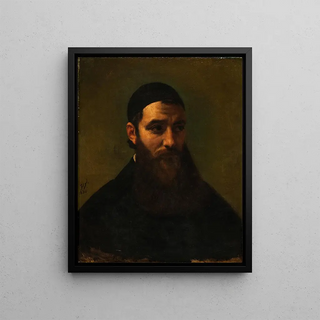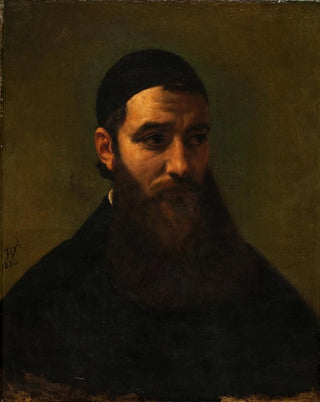Art print | Portrait of an Armenian priest - Horace Vernet


View from behind

Frame (optional)
In the fascinating world of art, some works transcend the mere frame to become witnesses of an era, a culture, a history. The "Portrait of an Armenian priest" by Horace Vernet is one of those creations that captivate the eye and the mind. This piece, evoking spiritual depth and cultural richness, invites us to delve into the complex and often little-known world of Armenia. Through the piercing gaze of the priest, Vernet manages to capture the very essence of his subject, revealing not only the individual's personality but also a facet of Armenian history. This artwork, far more than a simple portrait, is an invitation to explore the roots of a rich and ancient cultural identity.
Style and uniqueness of the work
Vernet's style is characterized by an unparalleled mastery of portraiture, blending realism and emotion. In "Portrait of an Armenian priest," the artist uses shades of light and shadow to create an atmosphere that is both intimate and solemn. The priest's face, marked by the wrinkles of time and experience, is highlighted by carefully orchestrated lighting, which emphasizes the depth of his gaze. The meticulous details of traditional Armenian clothing, as well as the symbolic elements surrounding them, testify to meticulous research and a deep respect for the culture he represents. This portrait is not just about depicting a man; it tells a story, that of faith, tradition, and heritage.
The artist and his influence
Horace Vernet, born in 1789, is an emblematic figure of the 19th century, recognized for his exceptional talent in depicting historical and military scenes. His artistic journey is marked by a desire to capture reality with almost photographic precision. Vernet established himself as a visual chronicler of his time, exploring various themes ranging from epic battles to portraits of prominent personalities. In the case of the "Portrait of an Armenian priest," he demonstrates a particular sensitivity to Eastern cultures, reflecting a growing interest in the Other at a time when

Matte finish

View from behind

Frame (optional)
In the fascinating world of art, some works transcend the mere frame to become witnesses of an era, a culture, a history. The "Portrait of an Armenian priest" by Horace Vernet is one of those creations that captivate the eye and the mind. This piece, evoking spiritual depth and cultural richness, invites us to delve into the complex and often little-known world of Armenia. Through the piercing gaze of the priest, Vernet manages to capture the very essence of his subject, revealing not only the individual's personality but also a facet of Armenian history. This artwork, far more than a simple portrait, is an invitation to explore the roots of a rich and ancient cultural identity.
Style and uniqueness of the work
Vernet's style is characterized by an unparalleled mastery of portraiture, blending realism and emotion. In "Portrait of an Armenian priest," the artist uses shades of light and shadow to create an atmosphere that is both intimate and solemn. The priest's face, marked by the wrinkles of time and experience, is highlighted by carefully orchestrated lighting, which emphasizes the depth of his gaze. The meticulous details of traditional Armenian clothing, as well as the symbolic elements surrounding them, testify to meticulous research and a deep respect for the culture he represents. This portrait is not just about depicting a man; it tells a story, that of faith, tradition, and heritage.
The artist and his influence
Horace Vernet, born in 1789, is an emblematic figure of the 19th century, recognized for his exceptional talent in depicting historical and military scenes. His artistic journey is marked by a desire to capture reality with almost photographic precision. Vernet established himself as a visual chronicler of his time, exploring various themes ranging from epic battles to portraits of prominent personalities. In the case of the "Portrait of an Armenian priest," he demonstrates a particular sensitivity to Eastern cultures, reflecting a growing interest in the Other at a time when






